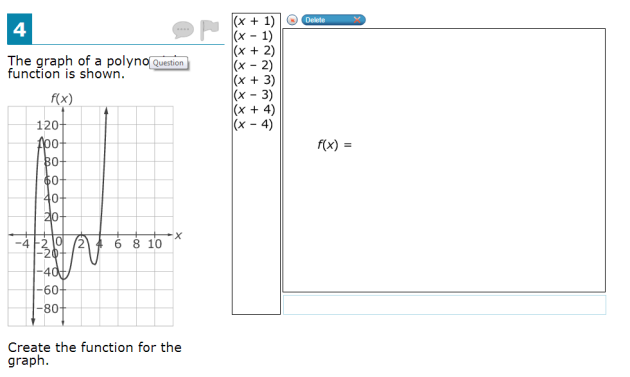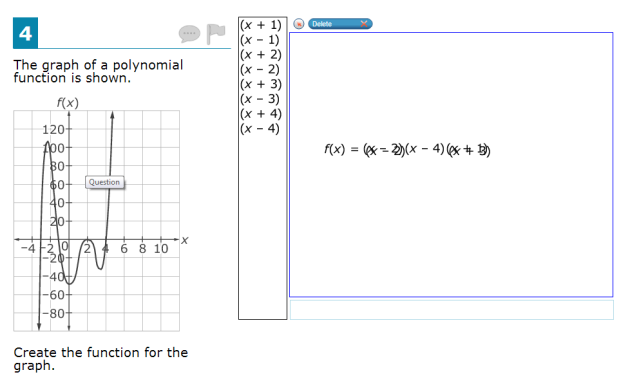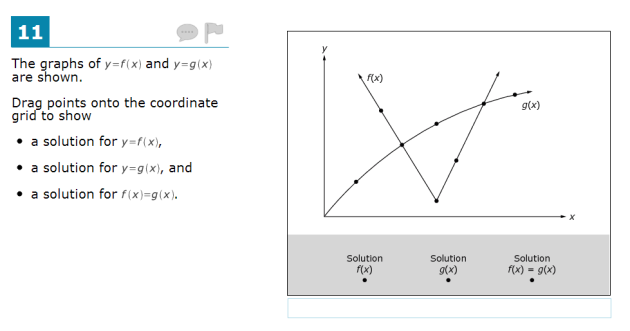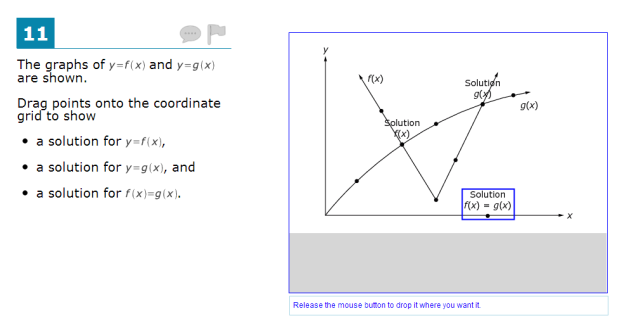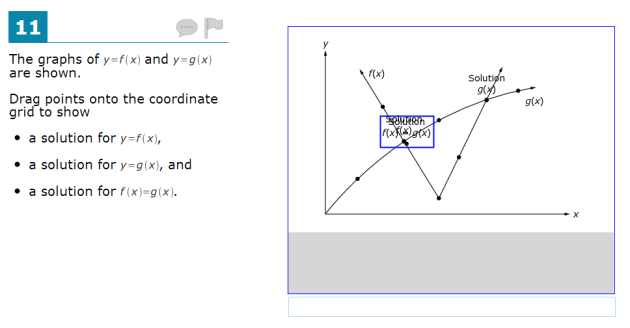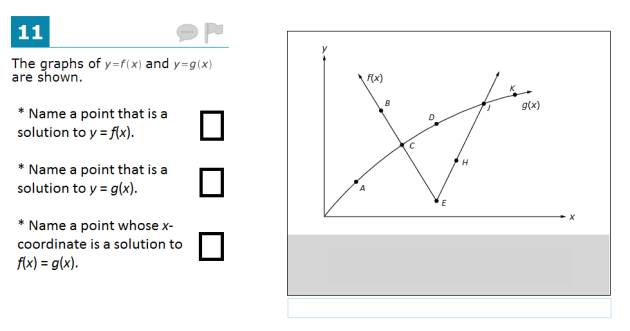[Testing Testing] SBAC Grade 11 Practice Test #4
June 5, 2013 8 Comments
Each “Testing Testing” post analyzes a released test item, focusing on both the mathematics and interface involved in the new breed of exams. Our goal is to help improve the quality of these exams, especially if they may be used to inform student graduation or teacher merit pay. The mathematical analysis here is from Al Cuoco, director of the Center for Mathematics Education at EDC, from the Trevi Fountain in Rome. I provide the interface analysis.
Here’s Problem 4 from the SBAC Grade 11 Math Practice Test.
There are several issues with this item. By far the greatest issue is that it doesn’t assess a Common Core standard. The closest standard is HSA-APR.B.3, and read it carefully:
- HSA-APR.B.3: Identify zeros of polynomials when suitable factorizations are available, and use the zeros to construct a rough graph of the function defined by the polynomial.
This problem doesn’t ask students to do that. It asks students to use a rough sketch of a graph to build a factorization, identifying the linear factors of the underlying polynomial.
Besides this, there are some serious mathematical issues with this item as presented. The correct answer to this type of problem should start out in one’s mind as a multiple of , applying the Remainder Theorem (HSA-APR.B.2). Then, you check a sixth point to find the multiple, making sure the polynomial agrees with the nonzero points on the graph (a polynomial function of degree n is determined by n+1 function values, not just its n roots). But no coordinates of a sixth point are given. A student could simply not think of this and get the problem right, or estimate the value of the function at 0 and see if the graph is approximately correct (and get it right), or assume that this is a test and read the minds of the test writers (and get it right). It’s a good thing the graph seems to pass through (0, -48), or there would be no way to give a correct answer!
Even if you could get the exact coordinates of f(0), there are other polynomials functions whose graphs contain these same points and that have an extra x-intercept off the picture. The phrase “the function for the graph” is not accurate: there is more than one. Better wording: “Find a polynomial function that could have this graph.” The phrase “Create the function” should also be avoided, since it’s not clear what it means; Common Core has students “define” a function or “build” a function for modeling or transformation.
Still, the core issue is that this problem does not directly address a standard. The problem would be much better if it assessed HSA-APR.B.3 directly: Give a function defined by a polynomial that has been partially factored, revealing some zeros, allowing for complete factorization. For example:
Students who can sketch the graph of g (or answer questions about the graph) have met several HSA-APR standards.
Separate from the mathematics, there are a few major interface issues with this problem. Students are only allowed to drag linear factors to the right, so it is not possible for a student to enter . They must instead enter the clumsy
. Some students will wonder why they have to do it this way, others will think the interface is broken. It’s an unnecessary hurdle that will prevent some students from answering correctly even though they are capable of completing the task on paper.
Like #11, the interface does a poor job of overwriting when new objects are placed. Dragged objects “snap” into one of five positions, and if an object is already there, conflict:
We can picture a student trying to do this on purpose, attempting to get the term. It easily happens by accident and the interface for “deleting” objects is not obvious. Would the answer above be marked correct or incorrect? It’s not clear, and that is a big problem.
The SBAC Practice Tests are available for public viewing, and we are grateful to have these problems available for public comment.
